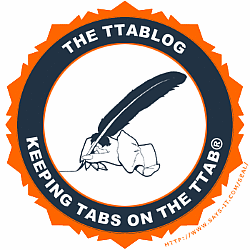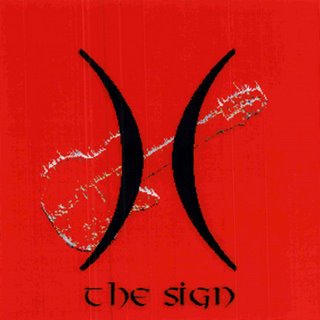The Top Ten TTAB Decisions of 2007® [Part 1 of 2]
The TTAB issued 500 or so final decisions in 2007, as well as numerous interlocutory rulings. Sixty-six of its decisions and rulings were deemed precedential (listed in yesterday's posting here). Once again, yours truly has unabashedly chosen the ten decisions that he believes are the year's most important and/or interesting. Five are precedential decisions and five (or six) are not. Perhaps the precedential rulings are the more important because they constitute binding precedent, but the non-precedential rulings at a minimum have educational and/or entertainment value. Or at least I hope so. [This posting is in two parts, the first five (or six) decisions being listed below].

Hurley Int'l LLC v. Volta, 82 USPQ2d 1339 (TTAB 2007). [precedential]. Extending its Medinol jurisprudence to a pending application, the TTAB found fraud because Applicants' mark was not in use in commerce in connection with all of the recited entertainment services when the Voltas filed their used-based application. But in dictum, the Board pointed practitioners to a possible escape route out of the fraud quagmire. The Voltas pleaded innocence, claiming that they misunderstood the requirements of Section 1(a), did not comprehend the legal meaning of "use in commerce," and "honestly believed that their ownership of the same mark in

Intel Corp. v. Emeny, Opposition No. 91123312 (May 15, 2007) [not precedential]. In a rare ruling on "intent to use" that may cause trademark practitioners to re-think their approach to ITU applications, the Board sustained an opposition to registration of the mark IDEAS INSIDE for on-line ordering and distribution services for a host of goods (including more that 200 items of clothing, from "anoraks" to "wrestling uniforms"), search engine services, and digital transmission services. Applicant Steven Emeny, appearing pro se, failed to produce any objective evidence of a bona fide intent to use his mark: no evidence of any business plans, nor any evidence of a single business contact with any potential partner who would supply the goods that Applicant would sell. Moreover, the application (like eight others filed by Emeny and later abandoned) included "an unreasonably broad listing of goods and services," and on cross-examination, Emeny admitted that he wanted to "make sure that nobody else [can] take advantage of those marks." The Board observed, ominously, that under Commodore Electronics Ltd. v. CBM Kabushiki Kaisha, 26 USPQ2d 1503 (TTAB 1993), the "failure to produce any objective evidence of an intent to use is sufficient basis for ruling in Intel’s favor." (TTABlogged here).

In re Joint-Stock Company "Baik", 84 USPQ2d 1921 (TTAB 2007) [precedential]. Judge Seeherman's concurring opinion was the highlight of this decision reversing a Section 2(e)(4) refusal of the mark BAIK for vodka. The Board found that the PTO failed to establish a prima facie case that BAIK is primarily merely a surname. Based upon the PTO’s evidence, essentially comprising 456 hits from a Verizon database, the Board saw BAIK as an "extremely rare surname," with no evidence that anyone with that surname has achieved any notoriety. As to other meanings of the term, the PTO pointed to "negative dictionary evidence," while Applicant argued that BAIK is an arbitrary Russian-sounding word "similar to Baikal, a Russian lake in

In re IP Carrier Consulting Group, 84 USPQ2d 1028 (TTAB 2007) [precedential]. The TTAB adopted the same stance as the Trademark side of the USPTO on admissibility of Wikipedia evidence: admissible, but its weight may vary depending on corroborating sources. The PTO refused registration under Section 2(e)(1) of the marks ipPCS and ipPIPE for telecommunications services featuring a device that allows Internet transmission of images and video. Applicant submitted the Wikipedia entry for "Internet Service Provider" to show that a common abbreviation for "Internet Provider" is "ISP." The Board observed that "[t]here are inherent problems regarding the reliability of Wikipedia entries because Wikipedia is a collaborative website that permits anyone to edit the entries." On the other hand, the Board also noted that Internet evidence is "generally admissible and may be considered for purposes of evaluating a trademark." It determined that it will consider Wikipedia evidence "so long as the non-offering party has an opportunity to rebut that evidence…," but the "better practice" is to corroborate that information. Although there was corroborating evidence for Applicant’s definition in the form of a dictionary listing, the Board nonetheless found that "IP" means "Internet Provider" and/or "Internet Protocol," and it deemed the two marks to be merely descriptive. (TTABlogged here).

New York State Dept. of Economic Development v. Stewart, Opposition No. 91162024 (March 13, 2007) [not precedential] and New York State Dept. of Economic Development v. I Love Santa Barbara, Inc., Opposition No. 91165648 (October 31, 2007) [not precedential]. The TTAB dismissed two Section 2(d) oppositions brought by the State of New York in connection with the familiar, registered I♥NY mark, because New York failed to prove its case in each instance. New York took no testimony and submitted mere photocopies of its registrations, rather than status-and-title copies, by way of notice of reliance. In the first, the Board ruled that New York had failed to establish priority, and in the second New York failed to prove both standing and priority. What makes New York’s mistake particularly unfathomable is the fact that, in each case, the Board, in denying New York's summary judgment motion, gave notice to New York that mere photocopies of the registrations were not sufficient for purposes of Rule 2.122(d). [As of August 31, 2007, ordinary photocopies from the PTO database are sufficient under Rule 2.122(d) when submitted with an original pleading, but that new rule applies only to proceedings commenced on or after that date]. (TTABlogged here and here).

[Part 2 of this two-part posting will appear tomorrow.]
"The Top Ten TTAB Decisions of 20**" is a Registered Trademark of John L. Welch. Text Copyright John L. Welch 2007-08.




0 Comments:
Post a Comment
<< Home